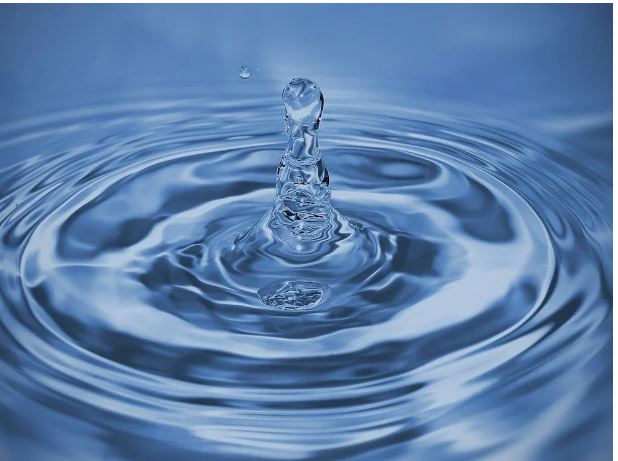From Permits to Pumping: What You Can Expect During the Process of Drilling a Water Well in Arizona
Having a private water well in Arizona can provide you with a sustainable, self-sufficient water source. However, the process of drilling a water well can be complex, requiring careful planning and adherence to various regulations. It can also be expensive. Check out this article from American Home Water and Air on the average cost of drilling a water well if you are looking for cost information.
In this article, we will explain what you can expect during the process of drilling a water well in Arizona.
Contents [hide]
Understanding the Basics
The first thing you need to understand are the basics of water well drilling. The more you know about the process, the better prepared you will be to navigate it. Let’s take a look at a few of the factors involved in drilling a water well in Arizona.
The Purpose of the Well: Wells can be drilled for various purposes, such as domestic use, irrigation, livestock, or industrial applications. Each purpose will impact the design, depth, and type of well. The cost of drilling depends heavily on the depth being drilled, so this is an important factor.
The Type of Well: The main types of wells in Arizona are dug wells, driven wells, and drilled wells. Each has its own unique set of advantages and drawbacks:
- Dug Wells
Dug wells are the simplest form of well. As the name implies, they are manually dug into the ground, often with shovels or backhoes, until the water table is reached.
Pros:
- Lower cost due to less sophisticated technology and equipment needed.
- Can be dug anywhere where the water table is within a reasonable depth.
- Useful in areas where the aquifer is shallow.
Cons:
- Generally, have a limited supply of water, which may not be sufficient for large water needs.
- More susceptible to contamination as they are not sealed as thoroughly as other types of wells.
- Limited to areas with a shallow water table.
-
Driven Wells
Driven wells are constructed by driving a small-diameter pipe into shallow sand or gravel water-bearing formations. A screened “well point” is attached to the end of the pipe to filter out sediment.
Pros:
- More secure than dug wells and less prone to contamination.
- Less expensive and quicker to install than drilled wells.
- Suitable for sandy or gravelly soil conditions where the water table is high.
Cons:
- Limited to shallow water-bearing formations.
- Can still be susceptible to contamination, particularly if not properly maintained or installed.
- May not provide a large enough water supply for significant water needs.
-
Drilled Wells
Drilled wells are created by drilling a hole into the ground using a drill rig. The hole is usually covered with a PVC or steel pipe. Drilled wells can access water much deeper than dug or driven wells.
Pros:
- Can reach deeper water-bearing formations, providing a more reliable water supply.
- Due to their depth and use of casing, they are less susceptible to contamination.
- Can be used in a wider variety of geological conditions.
Cons:
- More expensive to drill because they require specialized equipment and expertise.
- The drilling process may require permits and compliance with regulations.
- Over-pumping can deplete the groundwater level, requiring the well to be drilled deeper.
The Permitting Process
Before you start drilling, you need to obtain the necessary permits. The Arizona Department of Water Resources (ADWR) oversees the permitting process. Here are the key steps:
Application: Submit an application form to the ADWR, including details about the proposed well, its purpose, and its location.
Review: The ADWR reviews the application to ensure that it meets Arizona’s water laws and regulations.
Approval: If the application is approved, the ADWR will issue a permit, allowing you to proceed with drilling.
Site Selection and Well Design
Choosing the right site for your well and designing it properly are crucial to its success. This involves several factors:
Site Inspection: A qualified hydrogeologist or well drilling contractor should inspect the site for factors such as soil type, water table depth, and potential contamination sources.
Designing the Well: The well design should consider the site’s specific conditions, the well’s intended use, and the regulations in Arizona.
Drilling the Well
Once the site is selected and well designed, the drilling process can begin. This involves:
Setting up the Rig: The drilling contractor will set up a rig on the site that will drill the well.
Drilling: The rig drills into the ground to the desired depth, creating the well shaft.
Casing: A casing, usually made from steel or PVC, is inserted into the well shaft to prevent it from collapsing and to protect the water from contamination.
Grouting: The space between the casing and the well shaft is filled with grout, a type of cement, to further protect against contamination.
Well Development and Testing
After the well has been drilled, it needs to be developed and tested. This typically involves:
Well Development: This process cleans the well and the surrounding area to ensure good water flow into the well.
Pumping Test: A pumping test measures the well’s yield and the water level’s response to pumping. This helps determine if the well can meet your water needs.
Installing the Pump and Final Setup
The last major step in the process is installing the pump and completing the final setup.
Pump Selection: The type of pump selected will depend on the depth of the well and your water needs.
Installation: The pump is installed into the well, and the necessary piping and electrical connections are made.
Water Quality Testing: A final water quality test is conducted to ensure the water is safe to use.
Regular Maintenance and Monitoring Is Key
Once the well is operational, it’s important to maintain and monitor it regularly to ensure it continues to provide safe, clean water. Regular inspections by a professional can help detect issues before they become bigger problems. Water testing will ensure that the water is safe to use, and preventative maintenance will keep it clean and working properly.
Ultimately, the process of drilling a water well in Arizona is complex and requires careful planning and adherence to regulations. However, with the right team and preparation, it can be a rewarding project that provides a reliable and sustainable source of water.
Remember, the longevity and performance of your well depend largely on regular maintenance and monitoring. Make sure to establish a routine to keep your well-functioning optimally for years to come.



